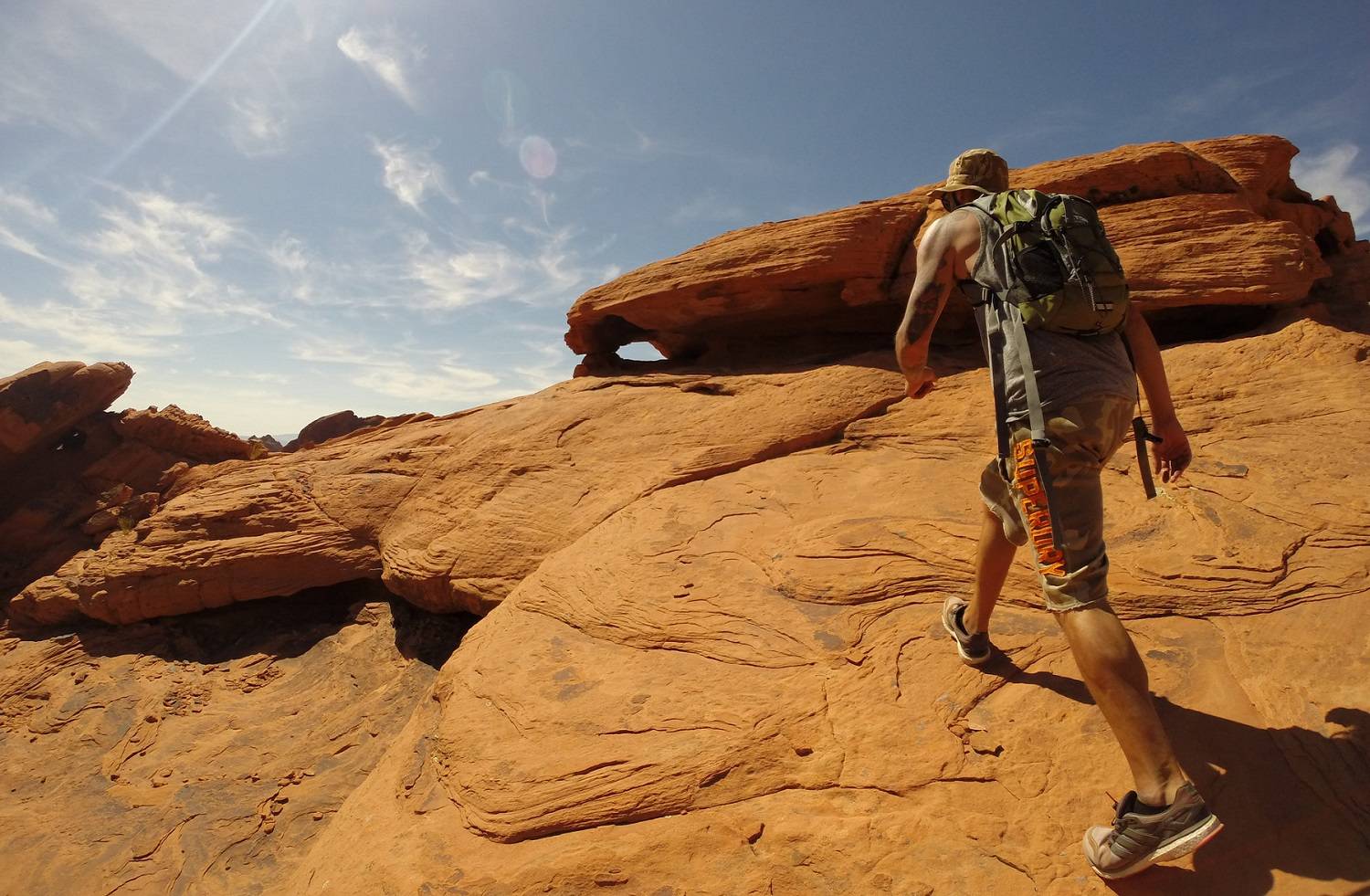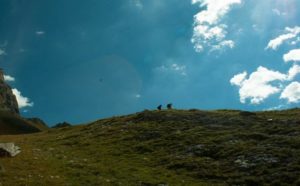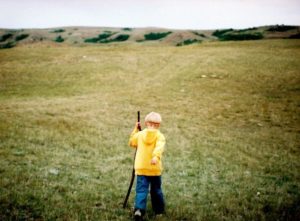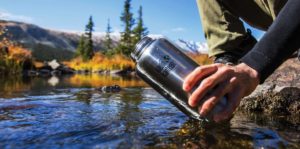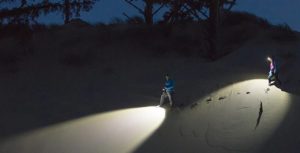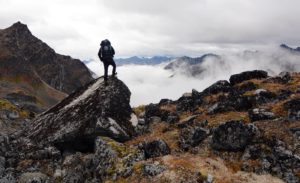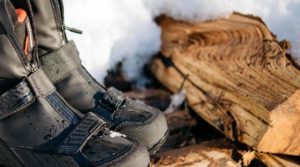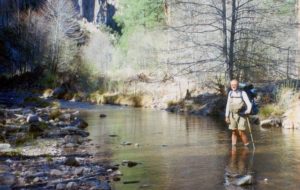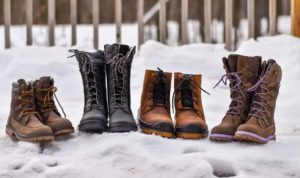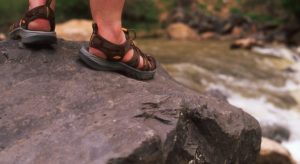To determine if this is possible, we must first distinguish between backpacking and hiking. Backpacking, for the purposes of this article, will consist of a trip lasting at least 2 nights and 3 days in the backcountry.
Lightweight backpacking is a method involving reducing overall pack weight by either eliminating certain gear, or using equipment specifically designed to be lightweight, such as titanium cookware or alcohol burning stoves. There are also personal modifications people will make to their gear, like removing the internal stays from their packs, or even more drastic measures such as cutting tags off the equipment or cutting their spork handles in half. These people are fanatics, but that’s ok. Many innovations in backcountry gear are a result of lightweight philosophies.
Lightweight backpacking ideology doesn’t stop at pack weight reduction; it also consists of clothing and sleep systems designed for the same purpose.
Hiking is typically done in a single day, and for the purpose of this article, we’ll assume our hike will take an entire day to complete and we’ll stick to pack weight reduction only.
The question posed here, how light could day hiking safely become, versus the typical amount of gear required for this activity? We will assume at this point that our day hike will consume an entire day, virtually from sunrise to sunset or slightly beyond. For this outing to be done correctly, you will need a pack, (preferably a hydration pack) food, compass/GPS, flashlight, lighter, matches, map, utensils, cookware, mug, extra socks, first aid kit, and rain gear of some fashion just in case. Now, everyone’s idea of necessary gear may vary slightly, but this is normally what I’ll carry if my hikes are in mountainous terrain, the weather is fairly warm, and the trek will be in the 10 mile range.
What can we do to lighten our load? That will boil down to your personal comfort tolerance and backcountry skill level. For the day hike, there are a few changes you could make. The first would be to eliminate the compass/GPS. If you were to do this, you need to be proficient at topographic map reading, have a familiarity with the area, and the trail/s you plan to use should be well marked. I rarely find it necessary to use navigational equipment when using well-defined trails, but the GPS is nice for things like the trip odometer and elevation reference. Bare in mind here, I’m NOT telling you to take off into the outdoors without navigation devices. You must be the judge as to whether that is safe for you to do or not. If you’ll be hiking in a designated wilderness area, a compass or GPS should be considered mandatory equipment.
The food you choose to carry can affect you’re overall weight as well. The hike will require at least 2 meals as well as snacks. We’ll assume we ate breakfast before setting out. If we choose freeze-dried meals, their weight for a single serving is approximately 2.7 ounces. If you choose these types of food, they’ll need to be reconstituted with boiling water. That being the case, we’ll need a backpacking stove, a mug or small pot, and most likely a spoon or spork. The Snow Peak titanium spork would be an excellent utensil to have. Most freeze dried meals come in a plastic pouch to which hot water can be added, eliminating the need for a pot. The idea would be to heat your water in the mug and pour it into the pouch.
An alternative to the freeze dried meals, would be to bring along dehydrated fruit, peanuts, and beef jerky. By doing this, you cancel out the need for a stove, fuel bottle or canister, and utensils. Other items in the day hiking gear list, I would consider to be mandatory, but we can see weight reduction from the above discussion.
So how does all this break down? Let’s look below at a few charts showing the different gear selections we have considered.
| Item: | Weight |
| CamelBak Rim Runner 2 Freeze Dried Meals Garmin eTrex Legend GPS* Lighter and Matches Map** MSR Pocket Rocket Stove MSR Fuel Canister for Stove Titanium Spork MSR Titanium Mug Adventure Medical First Aid Kit Dahlgren Light Hiking LV Socks Sierra Designs Rainwear Jacket Snacks*** Brunton Lamplight – LED Flashlight |
2 lbs. 3 oz (excluding water) 5.4 oz 5.3 oz 1.0 oz 2.5 oz 3.0 oz 12.0 oz (full) 1.5 oz 1.8 oz 6.5 oz 3.0 oz 5.0 oz 16.0 oz 3.0 oz |
| Total Weight | 6.31 lbs |
*We’ll use a GPS unit for weight purposes since it has greater functionality than a compass.
**Map weight was estimated to be roughly equivalent to the weight of a freeze-dried meal.
***Snack weight was an arbitrary figure that should cover an assortment of items to snack on.
One pound of snacks is probably an over estimation.
| Item: | Weight |
| CamelBak Rim Runner Lighter and Matches Map* Adventure Medical First Aid Kit Dahlgren Light Hiking LV Socks Sierra Designs Rainwear Jacket Snacks** Brunton Lamplight – LED Flashlight |
2 lbs. 3 oz (excluding water) 1.0 oz 2.5 oz 6.5 oz 3.0 oz 5.0 oz 32.0 oz 3.0 oz |
| Total Weight Weight Reduction |
5.50 lbs 13.0 oz |
* Map weight was estimated to be roughly equivalent to the weight of a freeze-dried meal.
**We’ll increase snack weight to 2 pounds since we eliminated the freeze-dried meals in this scenario.
As you can see in the above calculations, we did manage to shave 13 oz of weight. Of course, the use of 32 oz of snacks could be an over estimation as well. If one pound (16 oz) could sustain you for a full day (it would depend on the caloric content of snacks chosen), the second scenario could be reduced by another 16 ounces, making total weight loss 1 lb. 13 oz. for a total weight of 4.50 lbs.
In conclusion, we see that even a fairly light activity such as day hiking, can be further lightened with a little tweaking. The above information is a fairly basic equipment list. Individual weights will vary depending upon your own personal adjustments. For instance, you may add weight by bringing a camera, binoculars, or a field guide of some type. Conversely, you may lighten the load even more by researching weight of other packs, or even eliminating snacks. If you eat well before departing you may choose to forego snacks depending on hike length and difficulty.
The key to your load weight is determining what you feel you can safely live without. Experiment with different scenarios, keeping safety in mind first and foremost, and see what you come up with.
Here’s another possible scenario I’ve come up with. In this version, we’ll switch to a GoLite Dawn backpack, and a solo hiker size first aid kit. The GoLite Dawn isn’t hydration compatible so we’ll have to throw in a couple water bottles. Check this out:
| Item: | Weight |
| GoLite Dawn Backpack Nalgene Water Bottles (2) Lighter and Matches Map Adventure Medical Solo First Aid Kit Dahlgren Light Hiking LV Socks Sierra Designs Rainwear Jacket Snacks Brunton Lamplight – LED Flashlight |
14.0 oz 6.0 oz (empty) 1.0 oz 2.5 oz 4.0 oz 3.0 oz 5.0 oz 16.0 oz 3.0 oz |
| Total Weight | 3.40 lbs |
Now we’ve done some real weight shedding. See how fun that is? Go ahead, give it a try.

